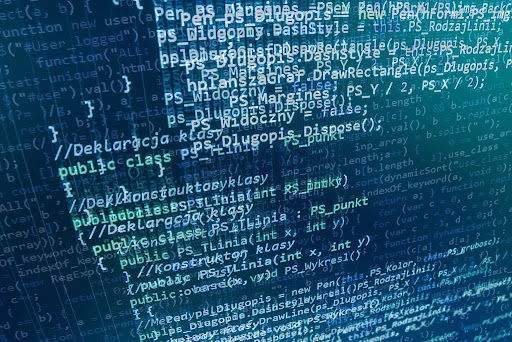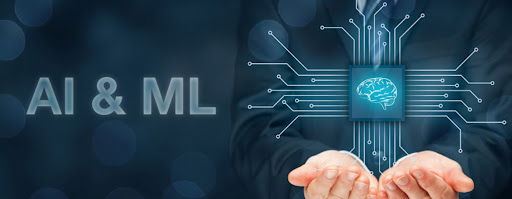Python For Artificial Intelligence and Machine Learning

Python is a versatile programming language widely used in Artificial Intelligence (AI) and Machine Learning (ML). Python's simplicity and extensive libraries, such as TensorFlow and Py Torch, make it the perfect choice for AI and ML users.
It empowers the developers to work efficiently. This blog post explores how Python simplifies AI and ML development, highlights key libraries, and showcases real-world applications. Let's get started:
Python: The Language of Choice for AI and ML
What programming language for startup's back-end development is the best was one prominent question facing developers earlier. With time, the nature of the question has changed, now it’s what programming language can decide the success of a startup working in AI and ML. Obviously, they arrive at Python.
Python is the language of choice for AI and ML due to its readability and simplicity. With its extensive libraries and frameworks, Python offers several AI and ML development tools. The Python language also benefits from strong community support and active development, showing continuous improvement and resource access.
Moreover, Python's compatibility with other languages allows seamless integration with existing systems and innovations, which makes it a versatile option for AI and ML projects. Python's ease of use, several libraries, community support, and interoperability make it an ideal language for AI and ML developers.
Essential Python Libraries for AI and ML

Python is a powerful language for artificial intelligence (AI) and machine Learning (ML) tasks. To tackle its full potential, several essential libraries provide specialized functionalities. These libraries include TensorFlow, PyTorch, and Scikit-learn, which offer data manipulation and model-building tools.
These libraries also offer efficient computations, advanced algorithms, and smooth workflow. Moreover, libraries like NumPy and pandas facilitate data handling and analysis. With these advanced libraries, developers can leverage the vast capabilities of AI and ML to solve the most complex problems and drive innovation. Let's take a look at the essential Python libraries for AI and ML:
1. NumPy: Powerful Numerical ComputingNumPy is essential for AI and ML due to its powerful numerical computing capabilities, including array manipulation, computation, and seamless integration with other libraries.2. Pandas: Data Manipulation and AnalysisPandas is an essential Python library for AI and ML with data manipulation and analysis capabilities. It provides data structures and handling, along with exploration and manipulation functions.
3. Matplotlib: Data Visualization Matplotlib is a tool for visualizing data, offering basic plotting and customization options and advanced visualization techniques.
4. Scikit-learn: Machine Learning in PythonScikit-learn is a Python machine-learning library covering introductory concepts, various algorithms, model evaluation, and selection.
Building AI and ML Models with Python
Building AI and ML models with Python is a perfect choice due to its versatility and reliability. Python's simplicity and extensive libraries allow efficient development and implementation.
Python's object-oriented programming paradigm offers modular code organization and reusability. Its integration with Jupyter Notebook facilitates interactive experimentation and documentation.
Python also supports cloud platforms like Google Cloud and AWS for scalable AI model deployment. Python's flexibility, community support, and comprehensive libraries make it an excellent choice for building AI and ML models.
1. Preprocessing Data Preprocessing data involves cleaning and preparing it for AI and ML models, handling missing data and outliers, and performing feature scaling and normalization.
2. Supervised LearningSupervised learning is an ML technique where models learn from labeled data, making predictions based on patterns. It involves classification and regression algorithms, trained and evaluated to optimize performance.
3. Unsupervised Learning Unsupervised learning involves discovering patterns and structures in data without labeled examples. It includes clustering, grouping data based on similarity, and dimensionality reduction, reducing data complexity. These techniques find applications in customer segmentation, anomaly detection, and image compression.
4. Deep Learning with TensorFlow and KerasDeep learning is an advanced form of machine learning that involves training neural networks to learn from data. It uses TensorFlow and Keras libraries to create and optimize complex neural network architectures. Training and fine-tuning deep learning models involve adjusting their parameters to improve their performance on specific tasks.
5. Reinforcement LearningReinforcement learning is AI learning, where agents make decisions based on rewards and punishments. It involves Markov Decision Processes and Q-Learning techniques for building and training agents.
Deploying and Scaling AI/ML Solutions

Deploying and scaling AI/ML solutions involve key steps such as saving and loading models, deploying them in production, and considering scalability aspects. Saving and loading models enable the preservation and reuse of trained models.
Deploying models in production involves making them available for real-world use, ensuring seamless integration and functionality. Scalability considerations address the ability of AI/ML applications to handle increased workloads and accommodate growing demands.
With Python, integrating AI and ML models in the backend is pretty much easier. This is another reason why Python dominates in back end development. In this respect, PhP, Python’s competitor, lacks, though the battle between the two technologies continue, leaving you with the question, Python or PhP, which one is better.
These considerations involve optimizing hardware and software resources, implementing distributed computing techniques, and designing architectures that efficiently handle large-scale data and user traffic. These steps allow AI/ML solutions to be effectively deployed and scaled to meet evolving needs and requirements.
Python Tools and Frameworks for AI and ML
Python Tools and Frameworks for AI and ML encompass a variety of resources. Jupyter Notebook offers an interactive development environment for coding. Anaconda serves as a Python distribution specifically designed for data science tasks. TensorFlow and Keras are deep learning frameworks widely used in the field. Additionally, PyTorch is a popular library focused on deep learning applications. These tools and frameworks enable developers to efficiently build and implement AI and ML models using Python, benefiting from their extensive functionalities and ease of use.
Conclusion
Python is vital in AI and ML, offering powerful libraries and frameworks. Its simplicity and versatility make it the preferred language for data scientists and researchers. Looking ahead, Python's future in AI and ML appears promising, with advancements in deep learning, natural language processing, and reinforcement learning on the horizon.
In this ever-evolving landscape of AI and ML, Python stands as a beacon of innovation. I urge readers to embrace its potential, fostering groundbreaking advancements. Special thanks to Finoit and CEO Yogesh Choudhary for their continuous support in revolutionizing these fields. Let's shape the future together!"



